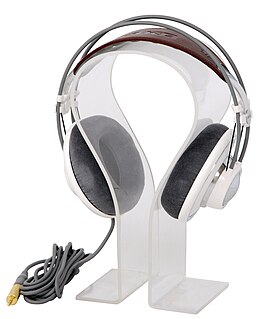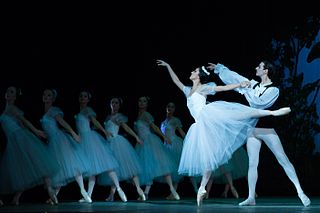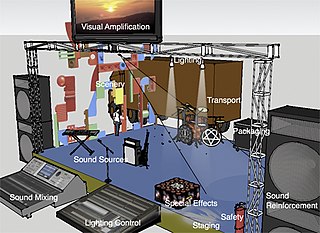| Year | Event/Gallery Name | Place |
|---|
| 1985 | | |
| Bundesgartenschau 85 | Berlin, Germany |
| Berlin in the Gasteig Art Center | Munich, Germany |
| Alternativa IV | Lisbon, Portugal |
| 1986 | | |
| ARS ELECTRONICA | Linz, Austria |
| The Mattress Factory | Pitssburg, PA, United States |
| Berlin Atonal Festival | Berlin, Germany |
| 1987 | | |
| STEIRISCHE HERBST | Graz, Austria |
| Galerie Giannozzo | Berlin, Germany |
| 1988 | | |
| Festival des Arts Electroniques | Rennes, France |
| Parcours Sonores, Musee de la Villette | Paris, France |
| Festival of European Street Theatre | Aurillac, France |
| 1989 | | |
| Festival PERSPECTIVES | Saarbrücken, Germany |
| 1990 | | |
| Festival les Arts au Soleil | Aeronef Lille, France. |
| Sound Symposium, St. John's | Newfoundland, Canada |
| “Urbane Aboriginale” | Berlin, Germany |
| 1991 | | |
| European Land Art Biennale | Cottbus, Germany |
| INTERFERENZEN– Art from West Berlin | Riga, Lettland, Latvia |
| 1992 | | |
| Cleveland Performance Festival | Cleveland, Ohio, United States |
| The Night of Electricity | Rotterdam, Netherlands |
| Third International Symposium for Electronic Ar, | Sydney, Australia |
| 1993 | | |
| MEDIALE | Hamburg, Germany |
| Art and Computers, University of Moscow | Moscow, Russia |
| “Augenlied”, Schloß Pluschow | Mecklenburgische Künstlerhaus, Germany |
| BECK Forum | Munich, Germany |
| ULTIMA Festiva | Oslo, Norway |
| 1994 | | |
| “Audio Drama”, Theatre zum Westlichen Staathirschen | Berlin, Germany |
| International Symposium for Electronic Art | Helsinki, Finland |
| German Television Video Prize, SWF, | Baden-Baden, Germany |
| 1995 | | |
| Kraków (THE KRAKOVIAN MEETINGS ). | Kakrow, Poland |
| Sound Art Festival | Hannover, Germany |
| 1996 | | |
| Sound Art Festival, Kraków. | Kakrow, Poland |
| 1997 | | |
| AUDIO GEISHAS, ICC-NTT Tokyo City Opera House. | Tokyo, Japan |
| ISEA | Chicago, Illinois, United States |
| Ostranenie Festival, Stiftung Bauhaus / Dessau. | |
| XIX International Triennale Exhibition of Milan. | |
| SONAMBIENTE Sound Art Festival, Academy of Arts, Berlin. | |
| International Street Theatre Festival, Holzminden (1st Prize for “Mobility and Flexibility”). | |
| “Audio Ballerinas and Electronic Guys” Tour/ USA, The KITCHEN (NYC), Scena Theatre (Washington, D.C.), Buskers Fare (NYC). | |
| KRYPTONAL Festival, Berlin. | |
| 38eme Rugissants, Grenoble. | |
| 1998 | | |
| MALTA Festival, Poznan, Poland | |
| Stockton Riverside Festival, UK. | |
| International Symposium for Electronic Arts, Chicago. | |
| “Audio Ballerinas and Electronic Guys” USA tour, The Kitchen (NYC). | |
| MALTA Festival,Poznan, Poland. | |
| Stedelijk Museum, Amsterdam | |
| 1999 | | |
| IDAT (International Dance and Technology Conference),Phoenix, Arizona. | |
| Danzdag, Kulturhus Aarhus, Denmark. | |
| “Audio Ballerinas and Electronic Guys“ , Theatre am Hallesches Ufer / Berlin. | |
| AUDIO IGLOO, commissioned electro-acoustic sculpture at Hull Time Based Arts, UK. | |
| Les Nuits Savoureuses de Belfort, France. | |
| 2000 | | |
| Monaco Dance Danses Forum, Montecarlo. | |
| Kulturbro Festival (Ystad, 2000). | |
| Tollwood Festival, Munich. | |
| Potsdamer Musikfestspiele, Potsdam. | |
| Geisha 3.0, Dock 11, Berlin. | |
| 2001 | | |
| Kunstmuseum Wolfsburg | |
| Berliner Festspiele | |
| New Haven Festival for Arts and Ideas | |
| Seoul Performing Arts Festival | |
| Medi@terra, Athens | |
| Musee des Arts et Industrie, Saint-Etienne | |
| FETA Festival, Gdansk | |
| 2002 | | |
| AUDIO BALLERINAS, Location One, NYC. | |
| HIGH FIDELITY production, Musiktheater im Revier, Gelsennkirchen (co-production mit Berndt Schindowski) | |
| AUDIO PEACOCKS, Artist in Residence at Lieux Publics, Marseille. | |
| Hamburger Bahnhof, Museum fuer Gegenwartskunst, Berlin. | |
| Potsdamer Festspiele. | |
| 2003 | | |
| 2004 | | |
| “Sonoric Atmospheres”/Ostseebiennale der Klangkunst. | |
| AUDIO IGLOO, sound sculpture in the Singuhr-Hörgalerie, Parochial Church/Berlin. | |
| Thailand New Media Art Festival/Bangkok. | |
| “Soundscape & Shadow” Musikfestival, Denkmalschmiede Höfgen | |
| Lowlands Festival., Holland | |
| Schweriner Kultursommer. | |
| LEM Festival (Gracia Territoria Sonor), Barcelona | |
| BUGA Park Potsdam, AUDIO PEACOCKS, gARTen event. | |
| 2005 | | |
| CORPUS Festival, Brugge, Belgien. | |
| The ELECTRONIC GUY solo Tour, Vancouver (Video In), NYC (Location 1). | |
| Die Blaue Nacht, Nurnberg. | |
| 2006 | | |
| ROBODOK Festival, Amsterdam. | |
| Taipei Digital Arts Festival, Taiwan. | |
| Sitelines Festival, NYC. | |
| Lange Mozart Nacht, Augsburg. | |
| SIGGRAPH, Boston. | |
| Digital Arts Week, Zurich. | |
| 2007 | | |
| IM AUGE DES KLANGS, Schloss Moyland/ Joseph Beuys Archive. | |
| INGENUITY, Cleveland Festival for Arts and Technology. Audio Ballerinas | |
| Digital Arts Week, Zurich. | |
| 2008 | | |
| MOSTRA DES ARTES SESC/ São Paulo, Brazil. Audio Ballerinas | |
| Hohenrausch Festival/ Rostock. Video Peacocks/ CyberBirds | |
| MUSICA EX MACHINA/ Bilbao. Audio Ballerinas | |
| Festival Musique de Rue, Besançon. Audio Ballerinas+ Audio Peacock | |
| 2009 | | |
| NAISA, Toronto. Feedback Fred + Audio Ballerina | |
| Berlinische Galerie, Berlin.Audio Ballerinas | |
| 2010 | | |
| TONSPUR_expanded: the Loudspeaker/Vienna, the AUDIO GUILLOTINE | |
| ObArt Festival,Kirschau/Bautzen, SORBEN 3000 (Performances) and SPEAKERS GATE | |
| Le Jardin d’O, Montpellier.Audio Ballerinas | |
| Zero1 Festival, San Jose Biennale, San Jose Ca. Audio Ballerinas | |
| 2011 | | |
| SPOR festival Aarhus, Ballet a Larsen Project. | |
| Festival Accroche-Coeurs, Angers (F). (Audio Ballerinas, Audio Cyclists, Audio Geishas, Plantagenets 3000 + MUR SONORE Sound Sculpture). | |
| 2012 | | |
| ZKM / Karlsruhe, SOUND ART. TEMPLE Sound Sculpture. | |
| STATT FARBE: LICHT Festival Bauhaus/Dessau (Audio Ballerinas + Audio Peacocks). | |
| Temporäres Kunstprojekt in Helle Mitte, Hellersdorf/Berlin (Audio Ballerinas + Audio Peacocks). | |
| 2013 | | |
| Skulpturenmuseum Glaskasten Marl. AUDIO IGLOO Sound Sculpture. | |
| European Cultural Capital / Kosice, Slovakia (Audio Ballerinas). | |
| Hard Rock Hotel, Palm Springs Ca. THE CUBE Sound Sculpture. | |
| 2014 | | |
| MarzMusik/ Berliner Festspiele. GATEWAY Sound sculpture. | |
| 2015 | | |
| Kobe Biennale. [6] | |
| Brno International Music Festival. | |
| Deutsches Technikmuseum Berlin. | |











